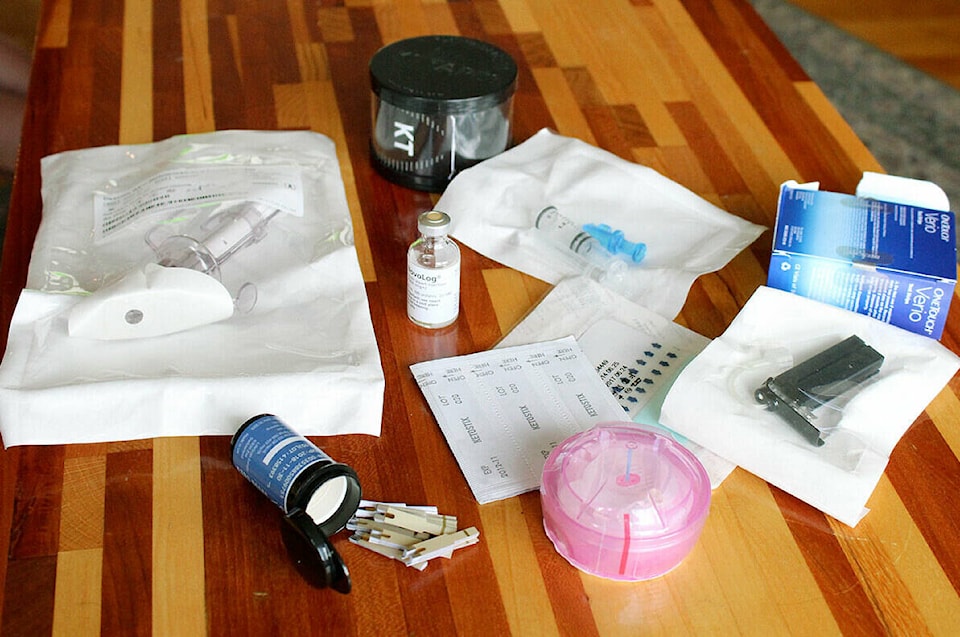Raman Kumar says a federal plan to cover diabetes medications and supplies would be тАЬphenomenalтАЭ because sheтАЩll finally stop worrying about how to pay for her care.
тАЬItтАЩs so expensive,тАЭ she said of replacing a $100 sensor for her continuous glucose monitor every 10 days.
тАЬMy extended health coverage through my husbandтАЩs work doesnтАЩt even cover that,тАЭ Kumar said. тАЬLast month I skipped half the month because you just donтАЩt want to go and spend that money. ItтАЩs $100 every time you walk into a pharmacy.тАЭ
Kumar has Type 1.5 diabetes, due to symptoms associated with both Type 1 and Type 2 diabetes.
тАЬI take Metformin, which is prescribed for Type 2 diabetes, and insulin before I go to bed, which is typically prescribed for Type 1,тАЭ she said from Surrey, B.C.
SheтАЩs concerned that her symptoms, including dizziness, will worsen if she doesnтАЩt maintain her unaffordable care.
On Thursday, federal Health Minister Mark Holland tabled a bill that paves the way for a universal drug plan, starting with coverage for birth control and diabetes drugs and supplies. The pharmacare deal is a key component of the supply-and-confidence deal between the governing Liberals and the NDP. Alberta and Quebec have said they want to opt out in favour of spending federal money on their own plans.
Holland did not provide details about coverage for supplies but told a news conference in Ottawa that diabetes patients have enough to worry about besides the cost of their care and that some resort to reusing syringes, which he said is тАЬnot right.тАЭ
тАЬWhat happens to that person who doesnтАЩt take their medication? They wind up, potentially, with an amputation, with a stroke, with a heart attack. They walk out, potentially, with potential kidney problems,тАЭhe said.
Doctors and advocacy groups hailed the plan as they wait for specifics on coverage in Canada, which is alone among countries with a universal health-care system in not including medications.
Dr. Tom Elliott, medical director of a diabetes clinic in Vancouver, said one of his patients was hospitalized last year because he could not afford to buy medication after paying for groceries.
тАЬBetween putting food on the table and taking his medications he chose food on the table. And the next thing you know heтАЩs in hospital, almost dying from severe diabetes complications,тАЭ he said.
The endocrinologist said that while British Columbia has the countryтАЩs best coverage for low-income patients, many do not meet the deductible criteria so they skip their drugs or donтАЩt take them at all.
тАЬSo what do you do? You skimp and you skip or you just donтАЩt afford them at all. ItтАЩs terrible.тАЭ
Elliott said that along with insulin and other drugs, continuous glucose monitors and insulin pumps are essential and that coverage for these items would make a life-saving difference to patients who will have тАЬfair and just treatment.тАЭ
тАЬIтАЩm optimistic that theyтАЩre covered. And if theyтАЩre not then really itтАЩs despair and weтАЩre back at square one. You have to cover them. TheyтАЩre life-changing, difference-making, game-changing devices.тАЭ
Diabetes Canada called the plan a тАЬmonumental stepтАЭ that would enhance the well-being of more than four million people living with diabetes, adding it will continue advocating for full and timely access to medications and devices.
Jessica Diniz, president of the Juvenile Diabetes Research Foundation, said every province has limitations on coverage and that the average out-of-pocket cost for Type 1 diabetespatients is about $18,000 a year.
While continuous glucose monitors help avoid complications, Diniz said a price tag of between $3,000 and $4,000 means many people must do without them, and the replacement cost of sensors every few days is another deterrent.
Diniz, whose group advocates for those with Type 1 diabetes, said researchers are trying to determine why Canada has a higher incidence rate of that condition than some other countries.
тАЬNorthern Hemisphere countries seem to have higher rates. WeтАЩre looking at Vitamin D, the food we eat. The rate of diagnosis is growing at four per cent a year compared to three per cent in the U.S. That doesnтАЩt sound big but it adds up and itтАЩs significant,тАЭ said Diniz,adding that the average age for diagnosis in children is 10.
тАЬBut IтАЩve met families whose children were 18 months or two years old. ItтАЩs the whole family thatтАЩs going through this.тАЭ
READ ALSO:
READ ALSO:



